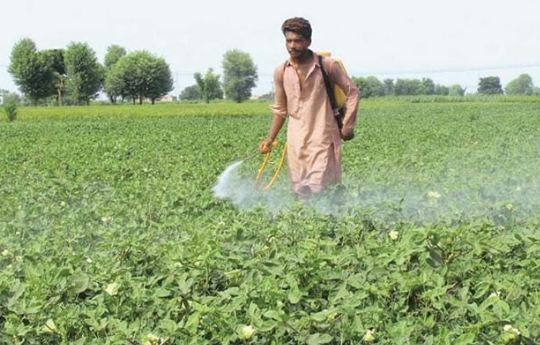By Hoor Babar
An essential agricultural revolution is quietly reshaping the story of hunger in Pakistan’s vast landscapes. Farmers are embracing cutting-edge techniques that promise higher yields while promoting the long-term health of the soil to achieve sustainability. These changes have broad implications in a country where agriculture plays a major economic role, employing around 38% of the labor force and contributing roughly 24% of the GDP.
One such technique that is becoming more and more popular is “crop rotation,” which is a tactic used by farmers all around the nation. Recent research indicates that crop rotation can raise total crop output by as much as 20%, which is a noteworthy amount in a country where food security is still a major worry.
In Pakistan, technology has emerged as a vital ally in the fight against hunger at the same time. A symbol of the technological revolution, drones are giving farmers accurate information on their crops. The Pakistan Telecommunication Authority reports that over 15 million more people are now broadband subscribers in rural regions, a notable rise.
This suggests that farmers are increasingly able to utilize digital tools and get knowledge that was previously unattainable.The cooperative efforts of farmers and communities demonstrate the communal dimension of this fight against hunger. Community-driven initiatives are becoming more prevalent in Pakistan due to its different agro-climatic zones.
For example, the “Punjab Irrigated-Agriculture Productivity Improvement Project” was started with the goal of improving water management techniques and increasing production in Punjab, where agriculture is the primary industry.
But the battle against hunger doesn’t stop in the fields—it affects every link in the food supply chain. About 24.3% of Pakistanis are estimated by the World Bank to be living below the country’s poverty line. With the increasing prevalence of direct interactions between farmers and customers, local markets are emerging as critical nodes in addressing this dilemma.
In addition to ensuring farmers receive just remuneration; this change improves community access to fresh fruit that is sourced locally.With this comprehensive strategy, even minor adjustments are producing notable results.
The Food and Agriculture Organization (FAO) reports that planting drought-resistant crops in areas where water is lacking has enhanced agricultural resilience overall by 15%. These adjustments support a more dependable and sustainable food supply.
As we travel across Pakistan’s diverse landscape, which includes both steep mountains and lush plains, the battle against hunger takes on a collective hue. Intelligent farming methods, technological developments, and community collaboration are driving a transformation of the nation’s agricultural landscape, which is intricately linked to its economic fabric. This path towards abundance and sustainability holds promise for a hunger-free Pakistan, where every plate is filled and no one experiences the feeling of hunger in a country where about 20 million people experience food insecurity.
By Hoor Babar
Research Scholar
Institute of management Sciences (IMS), Peshawar












